I’ve chased tunas for years using just about every technique known to man. Trolling is fine, chunking is sportier, jigging is a hoot, but when there’s the opportunity to catch them with spinning tackle and poppers … wow, sign me up! Nothing compares to watching a tuna explode on a surface lure.
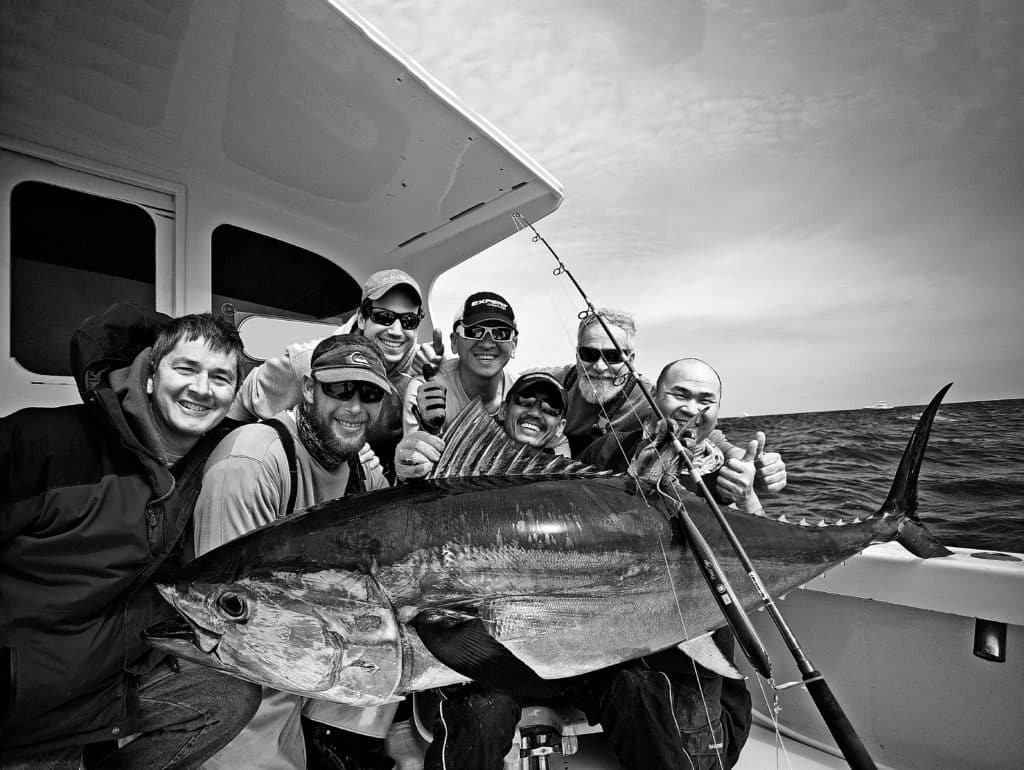
On a trip to Venice, Louisiana, last October, I hooked up with friends Bill Butler and Donald Bourgeois for a few days of tuna fishing. Bill and his brother Mike own Venice Marina, which carries the nickname “Tuna Town,” and with good reason. Yellowfin abound in the surrounding offshore waters most of the year, and blackfin add to the fun during the warmer months. Butler never fails to put us on tuna, but this trip, we left the bait at the dock. Summer and fall are prime times for surface action, and with thoughts of yellowfin going airborne in pursuit of our lures, we rigged with nothing but topwater plugs.
Who’s on First?
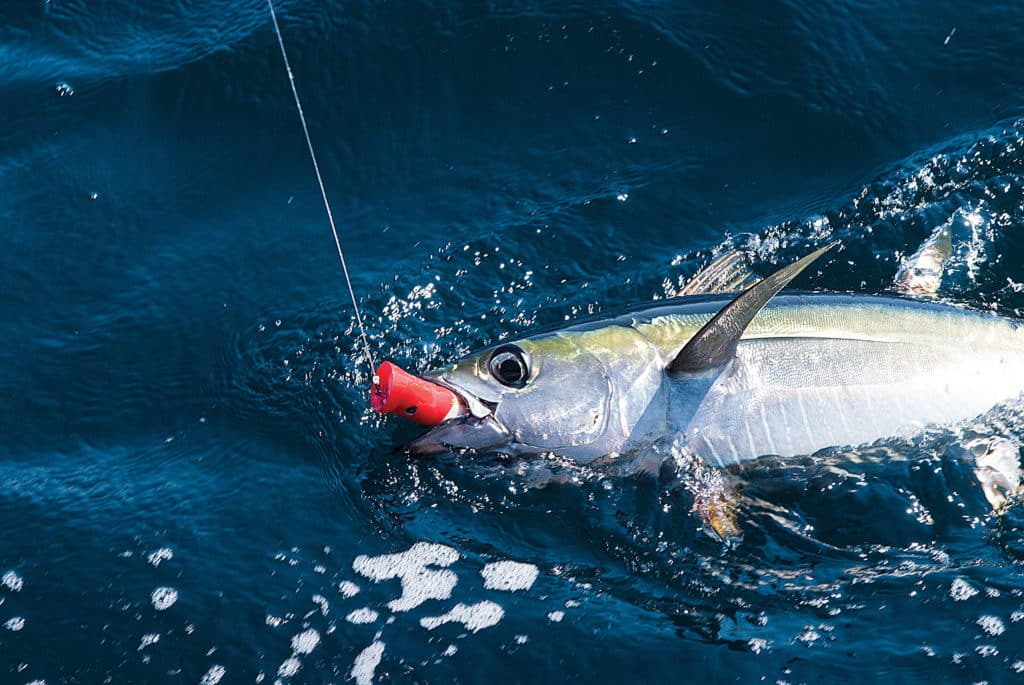
Tuna often trail shrimp trawlers, gobbling up the bycatch dumped after they bring in the nets. Yellowfins had been caught recently around some shrimpers near the mouth of the Mississippi, so after loading Butler’s 42-foot Invincible with a selection of spinning outfits and surface lures, that’s where we headed. Our first customer wasn’t a yellowfin, but a nice blackfin that smashed a Yo-Zuri Sashimi Bull popper. Getting a hookup soon after we arrived at our first stop got everyone excited, but with nothing else to show an hour later, Butler decided to hunt for tuna around some oil rigs. It turned out that was the ticket: We experienced red-hot surface action over the next few days around various platforms. Not all the rigs we tried held bait, but when we found one that did, the tuna were eager to hit our topwaters.
Mass Appeal
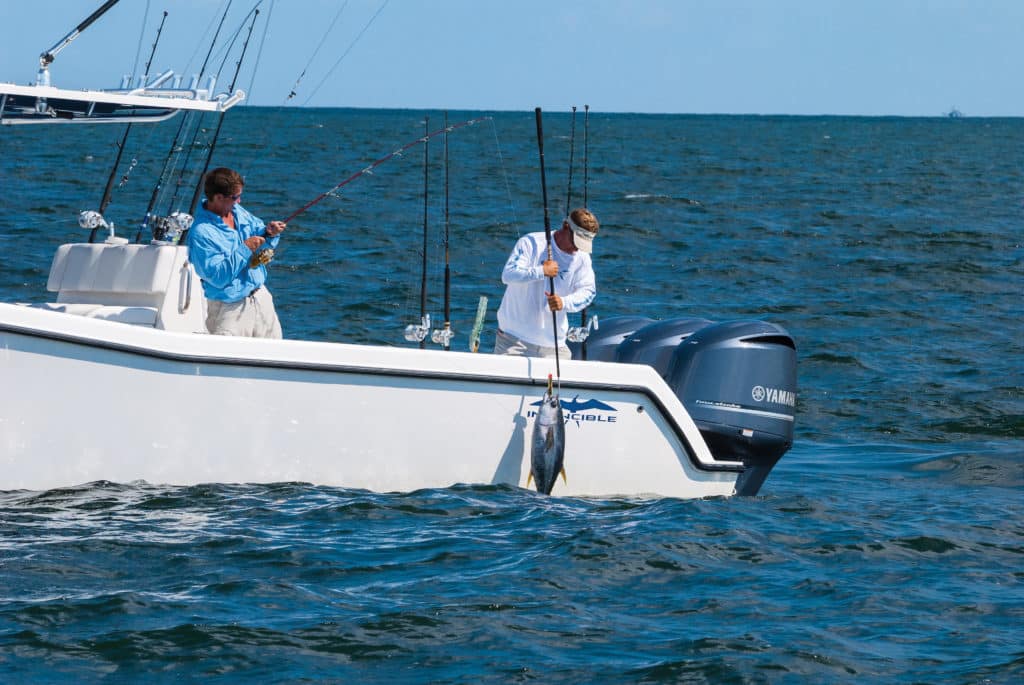
The only tuna I have yet to fool with surface lures is the bigeye, which tends to feed deep during daylight hours. All other tuna species available in U.S. waters respond to topwater plugs at some point. I’ve plugged yellowfins day and night in the canyons off the mid-Atlantic coast. And on a trip to Green Canyon in the Gulf of Mexico, I encountered an unexpected scenario: yellowfins exploding on flying fish after dark under the lights of enormous floating oil rigs. That time, poppers worked very slowly did the trick. Now I never go canyon fishing without a big spinner and surface plugs.
Blackfins Too
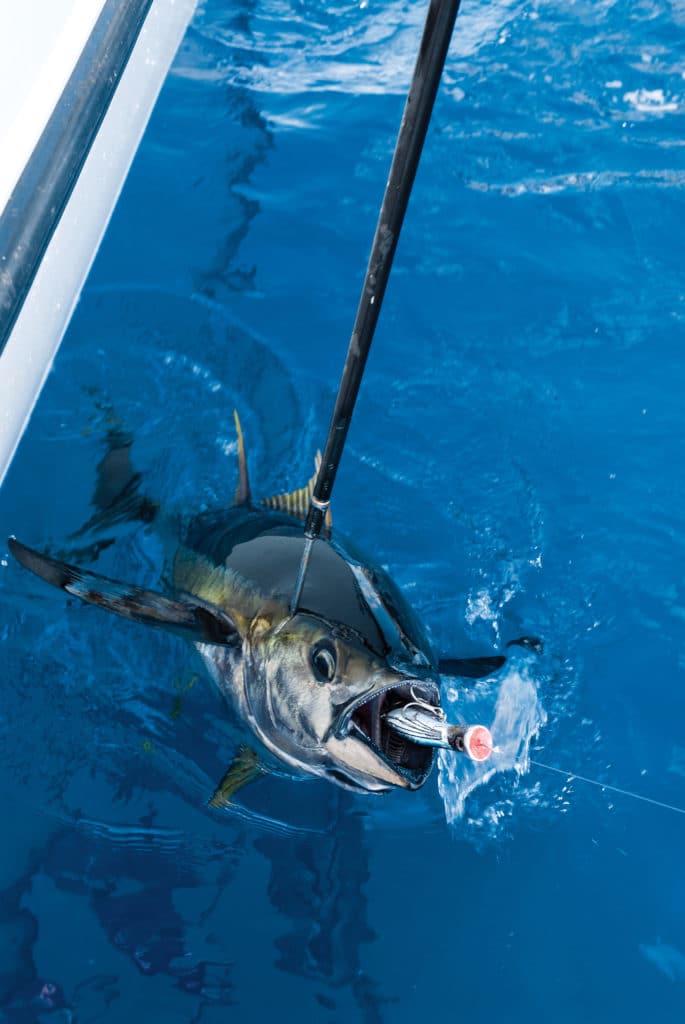
Blackfin tuna are suckers for topwater lures. My first experience with them came in the early ’80s, fishing with the late Capt. Joe Alexander off Key West, Florida. He took us in search of anchored shrimp boats ready to sort their catch. There were acres of false albacore — also called little tunny or bonito — along with the blackfin tuna, feeding on the bycatch. And I quickly learned that waiting for a pack of blackfin to come into view and casting directly in front of them was the only way to keep bonito from seizing my lure every time. In other places, like Jupiter, Florida, the ratio of tuna versus bonito is more favorable. I fished there with Capt. George Mitchell and Patrick Sebile of Sebile lures last year, and, much to our delight, the blackfin were happy to oblige.
Northern Game
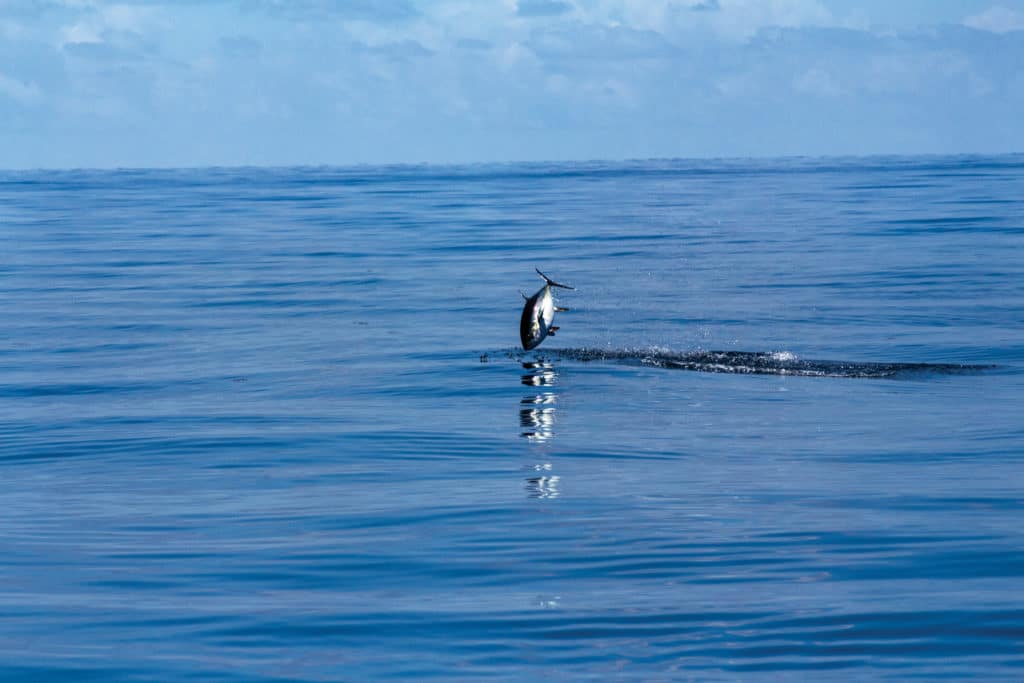
The waters off New England and the mid-Atlantic coast can be excellent to target bluefin tuna with topwater tactics, especially early in the season when the surface water is warmer, and the fish feed and hold shallow. Capt. Gene Quigley out of Manasquan Inlet, New Jersey, is a major proponent of fishing bluefin with poppers and sliders. He says surface plugs are effective most of the tuna season. “Later, in the fall, when bluefin migrate down the beach blasting baitfish along the way, we get another shot at surface action. But it requires a lot of casting for very few bites,” says Quigley.
Choose Your Weapons
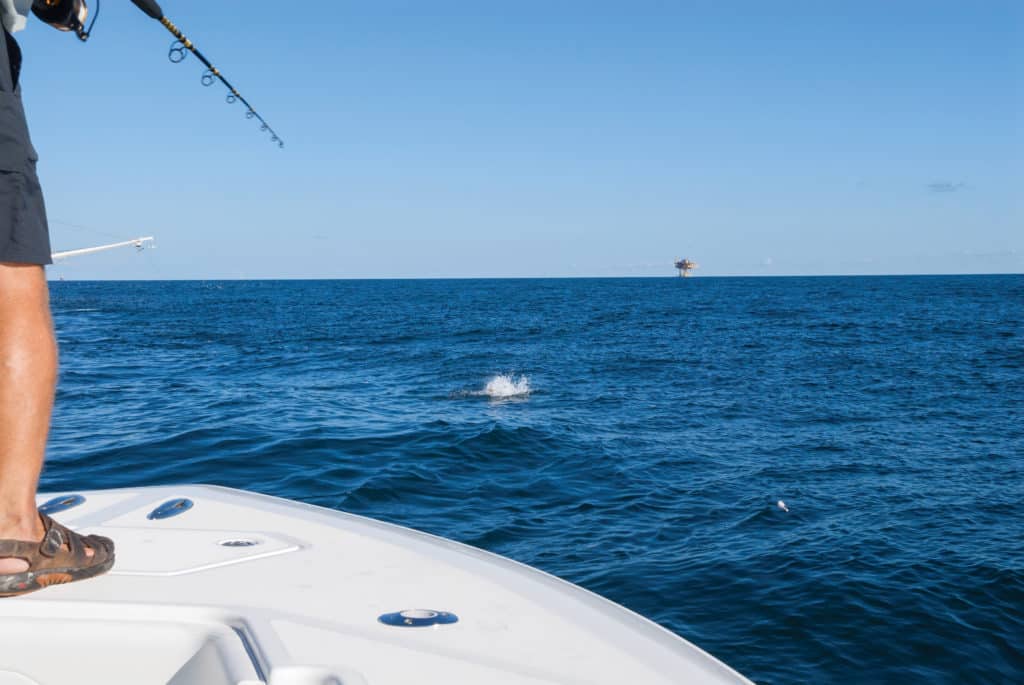
Fighting a substantial tuna on spinning tackle has its challenges, and the last thing you want is to go into battle undergunned. Matching the rod, reel and line to the species of tuna you plan to target is a must. And don’t forget a fighting belt for those lengthy bouts with the big boys.
The rods must cast plugs a good distance, and possess the backbone and lifting power to handle a knock-down, drag-out tussle with a large fish that, as tuna usually do, is going to sound deep and fight for every inch of line as it circles under the boat until brought to gaff. Bill Butler fishes Shimano Terez 7-foot, 8-inch spinners — designated as popper rods — with medium-heavy action and rated for 50- to 100-pound line. I can attest to their performance both casting lures and pulling on yellowfin. Back home on the bluefin grounds, I opt for a shorter 6-foot, 4-inch spinning rod from Penn’s Bluewater Carnage series rated for 65- to 100-pound line. It casts well and fights fish effectively.
Reel ‘Em In
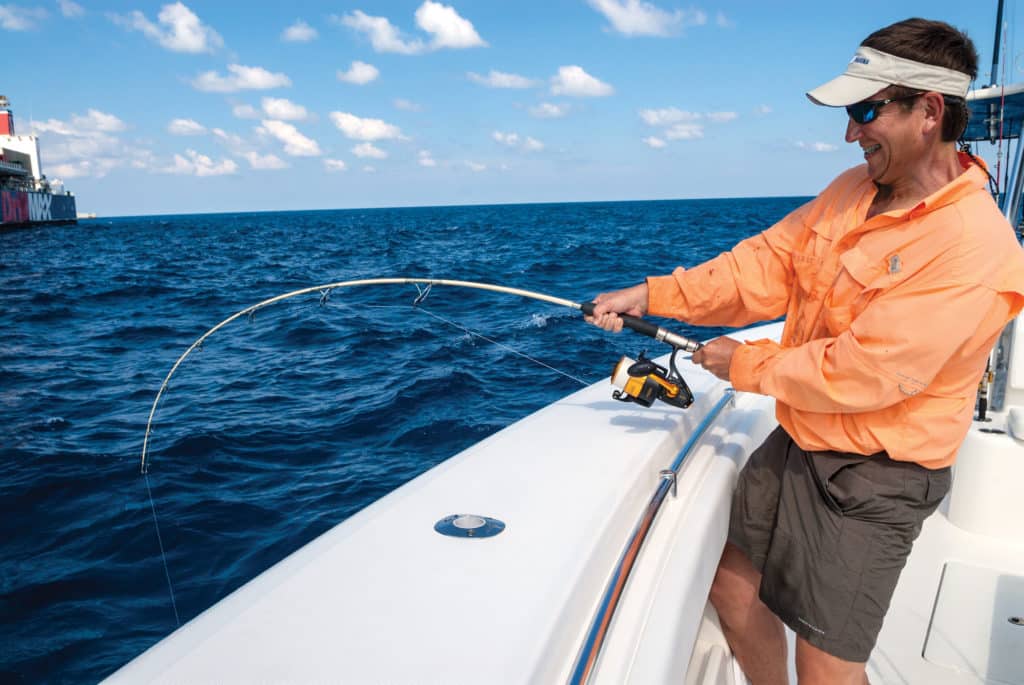
Reels require two key features: ample line capacity and a first-rate drag. In the Gulf, we fished Penn Torque 7s and Spinfisher VI 8500s loaded with 65- and 80-pound braid. Braid is, as far as I’m concerned, the only way to go. Its thin diameter and inherent strength mean more line on the reel. And when a tuna doubles back at high speed with a big loop of line trailing, the thin braid creates less drag as it cuts through the water, allowing anglers to take up the slack faster than with mono. To complete our setups, we attach short 80-pound mono leaders and 175-pound Tactical Anglers Power Clips on the ends for easy lure changes without worrying about snap failure.









